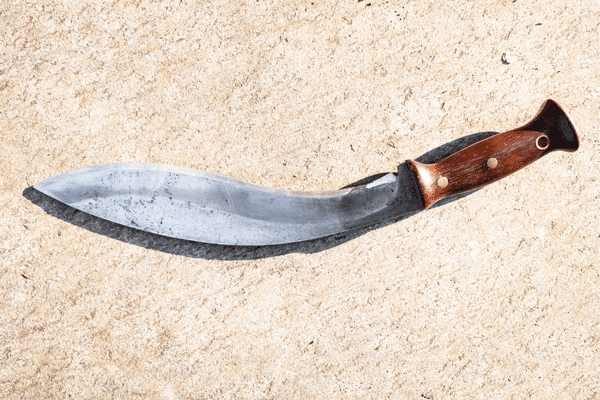Types of Scimitar Swords
Scimitar swords have a rich and diverse history, and their designs have been shaped by the various cultures and regions in which they originated. Each type of scimitar sword carries unique characteristics and features, making them fascinating objects of study for historians, weapon enthusiasts, and collectors alike.
1. Persian Scimitar Swords:
The Persian scimitar, also known as the "shamshir," is one of the most iconic and influential scimitar swords. It emerged during the 9th century in Persia (modern-day Iran) and quickly gained popularity among warriors for its effective design in slashing and thrusting movements. The shamshir features a curved blade with a pronounced belly, allowing for powerful cutting capabilities. Its hilt often incorporates intricate and artistic designs, showcasing Persian craftsmanship and attention to detail.
2. Arabian Scimitar Swords:
The Arabian scimitar, commonly referred to as the "saif," has its roots in the Arabian Peninsula and was wielded by Arab warriors throughout history. Unlike the Persian shamshir, the Arabian saif typically has a straighter blade with a more gradual curve towards the tip. This design provided better control during combat, making it well-suited for mounted warfare and swift slashing attacks.
3. North African Scimitar Swords:
North Africa has its own unique style of scimitar swords, often known as the "nimcha" or "kaskara." These swords feature a distinctive double-curved blade with one curve near the hilt and another towards the tip. The nimcha was particularly popular in Morocco, while the kaskara was prevalent in regions like Sudan and Chad. These scimitars were prized possessions and were often decorated with symbols and inscriptions representing the owner's status and beliefs.
4. Turkish Scimitar Swords:
Turkey, with its rich historical heritage, also contributed to the diversity of scimitar sword designs. The Turkish sword "kilij" had a slightly curved blade with a single cutting edge, while the hilt often incorporated a distinctive "Y"-shaped crossguard. The kilij was renowned for its craftsmanship and was favored by both Turkish warriors and Ottoman soldiers during their extensive campaigns.
5. Indian Scimitar Swords:
India developed its own unique style of scimitar swords, including the "talwar" and "tulwar." The talwar had a slightly curved, slender blade with a highly effective cutting edge. The hilt featured a distinctive disc-shaped pommel and a knuckle guard for better protection. The tulwar, on the other hand, had a wider, more pronounced curve towards the tip and was known for its versatility in both cutting and thrusting maneuvers.
Each type of scimitar sword played a significant role in the culture and warfare of the regions where they were used and also you can buy various types of swords from battlingblades.com. The distinct designs not only reflected the unique fighting styles of their wielders but also showcased the artistic and technical prowess of the craftsmen who forged them. Over time, scimitar swords became more than just weapons; they evolved into symbols of honor, status, and heritage, often passing through generations as treasured family heirlooms.
Today, these beautiful and historically significant blades continue to captivate the imagination of enthusiasts and collectors worldwide. The study of scimitar swords offers a glimpse into the past, allowing us to better understand the martial traditions and cultural identities of the societies that forged and wielded these magnificent weapons.







Comments
Post a Comment